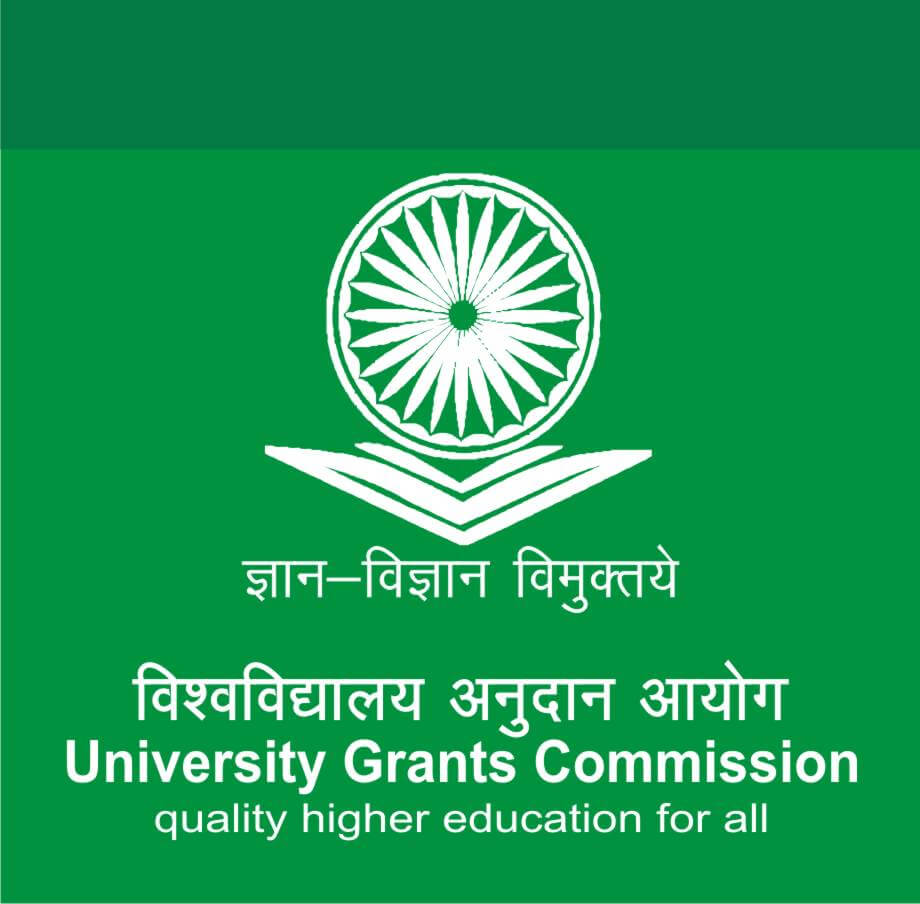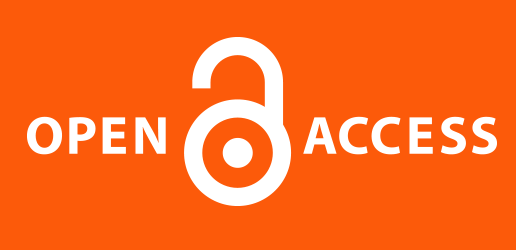INTERNATIONAL JOURNAL OF CREATIVE RESEARCH THOUGHTS - IJCRT (IJCRT.ORG)
International Peer Reviewed & Refereed Journals, Open Access Journal
IJCRT Peer-Reviewed (Refereed) Journal as Per New UGC Rules.
ISSN Approved Journal No: 2320-2882 | Impact factor: 7.97 | ESTD Year: 2013
Call For Paper - Volume 13 | Issue 12 | Month- December 2025
Scholarly open access journals, Peer-reviewed, and Refereed Journals, Impact factor 7.97 (Calculate by google scholar and Semantic Scholar | AI-Powered Research Tool) , Multidisciplinary, Monthly, Indexing in all major database & Metadata, Citation Generator, Digital Object Identifier(CrossRef DOI)
Contact Us Click Here
WhatsApp Contact Click Here
Volume 3 | Issue 4 |
| IJCRT Journal front page | IJCRT Journal Back Page |
Paper Title: A COMPREHENSIVE REVIEW ON CARBON NANO TUBES
Author Name(s): Anis Ahmad
Published Paper ID: - IJCRTC020019
Register Paper ID - 209663
Publisher Journal Name: IJPUBLICATION, IJCRT
DOI Member ID: 10.6084/m9.doi.one.IJCRTC020019 and DOI :
Author Country : N, India, - , -, - , | Research Area: Science and Technology Published Paper URL: http://ijcrt.org/viewfull.php?&p_id=IJCRTC020019 Published Paper PDF: download.php?file=IJCRTC020019 Published Paper PDF: http://www.ijcrt.org/papers/IJCRTC020019.pdf
Your Paper Publication Details:
Title: A COMPREHENSIVE REVIEW ON CARBON NANO TUBES
DOI (Digital Object Identifier) :
Pubished in Volume: 3 | Issue: 4 | Year: July 2016
Publisher Name : IJCRT | www.ijcrt.org | ISSN : 2320-2882
Subject Area: Science and Technology
Author type: N
Pubished in Volume: 3
Issue: 4
Pages: 90-94
Year: July 2016
Downloads: 1301
E-ISSN Number: 2320-2882
Abstract
Licence: creative commons attribution 4.0
License
Keywords
Carbon Nanotubes, Review analysis, Meta Analysis,
License
Paper Title: UNDERSTANDING INVESTMENT PATTERNS AND HABITS AMONG RURAL RESIDENTS IN THRISSUR DISTRICT
Author Name(s): Johnson N J, S V Rajkumar
Published Paper ID: - IJCRT1807506
Register Paper ID - 260774
Publisher Journal Name: IJPUBLICATION, IJCRT
DOI Member ID: 10.6084/m9.doi.one.IJCRT1807506 and DOI : http://doi.one/10.1729/Journal.39474
Author Country : Indian Author, India, 680302 , THRISSUR, 680302 , | Research Area: Commerce All Published Paper URL: http://ijcrt.org/viewfull.php?&p_id=IJCRT1807506 Published Paper PDF: download.php?file=IJCRT1807506 Published Paper PDF: http://www.ijcrt.org/papers/IJCRT1807506.pdf
Your Paper Publication Details:
Title: UNDERSTANDING INVESTMENT PATTERNS AND HABITS AMONG RURAL RESIDENTS IN THRISSUR DISTRICT
DOI (Digital Object Identifier) : http://doi.one/10.1729/Journal.39474
Pubished in Volume: 3 | Issue: 4 | Year: December 2015
Publisher Name : IJCRT | www.ijcrt.org | ISSN : 2320-2882
Subject Area: Commerce All
Author type: Indian Author
Pubished in Volume: 3
Issue: 4
Pages: 374-383
Year: December 2015
Downloads: 338
E-ISSN Number: 2320-2882
Abstract
This study explores the investment practices and preferences of rural residents in Thrissur District, Kerala, providing a detailed analysis of their financial decision-making processes. Conducted between April and May 2014, the research employed a multi-stage sampling technique to ensure a representative sample of the rural population. Data were gathered from 200 respondents through a structured questionnaire administered at major bus stations, public places, and shopping centres by trained personnel. The study identifies significant variations in investment preferences among different occupational groups, including salaried individuals, professionals, coolies, self-employed people, and agriculturists. Key findings indicate that salaried individuals and self-employed people prioritize secure and low-risk investments such as life insurance and bank fixed deposits. Conversely, agriculturists and coolies show a strong preference for tangible and community-based investments, like gold and chit funds. Professionals display a balanced approach, favouring both traditional savings instruments and long-term asset-building investments. Overall, the results highlight a predominant preference for low-risk and secure investment avenues across all groups, with cultural factors and socio-economic conditions significantly influencing financial behaviour.
Licence: creative commons attribution 4.0
License
Keywords
Rural investors, Investment behaviour, Thrissur District, Investment pattern
License
Paper Title: Security in Cryptographic Techniques For Wireless Sensor Networks
Author Name(s): Kulbhushan Singh
Published Paper ID: - IJCRT1704149
Register Paper ID - 170490
Publisher Journal Name: IJPUBLICATION, IJCRT
DOI Member ID: 10.6084/m9.doi.one.IJCRT1704149 and DOI :
Author Country : Indian Author, -, - , -, - , | Research Area: Science & Technology Published Paper URL: http://ijcrt.org/viewfull.php?&p_id=IJCRT1704149 Published Paper PDF: download.php?file=IJCRT1704149 Published Paper PDF: http://www.ijcrt.org/papers/IJCRT1704149.pdf
Your Paper Publication Details:
Title: SECURITY IN CRYPTOGRAPHIC TECHNIQUES FOR WIRELESS SENSOR NETWORKS
DOI (Digital Object Identifier) :
Pubished in Volume: 3 | Issue: 4 | Year: November 2015
Publisher Name : IJCRT | www.ijcrt.org | ISSN : 2320-2882
Subject Area: Science & Technology
Author type: Indian Author
Pubished in Volume: 3
Issue: 4
Pages: 1158-1164
Year: November 2015
Downloads: 1913
E-ISSN Number: 2320-2882
Abstract
Wireless Sensor Network (WSN) is consisting of independent and distributed sensors to monitor physical or environmental conditions, such as temperature, sound, pressure, etc. The most crucial and fundamental challenge facing WSN is security. Due to minimum capacity in-term of memory cost, processing and physical accessibility to sensors devices the security attacks are problematic. They are mostly deployed in open area, which expose them to different kinds of attacks. In this paper, we present an illustration of different attacks and vulnerabilities in WSN.Wireless sensor networks consist of autonomous sensor nodes attached to one or more base stations.As Wireless sensor networks continues to grow,they become vulnerable to attacks and hence the need for effective security mechanisms.Identification of suitable cryptography for wireless sensor networks is an important challenge due to limitation of energy,computation capability and storage resources of the sensor nodes.Symmetric based cryptographic schemes donot scale well when the number of sensor nodes increases.Hence public key based schemes are widely used.We present here two public – key based algorithms, RSA and Elliptic Curve Cryptography (ECC) and found out that ECC have a significant advantage over RSA as it reduces the computation time and also the amount of data transmitted and stored.
Licence: creative commons attribution 4.0
License
Keywords
Wireless Sensor Network,Security, Cryptography, RSA,ECC.
License
Paper Title: MANAGING POWER IN CMOS DIGITAL CIRCUIT USING SLEEP SWITCH AND HIGH VT TECHNIQUES
Author Name(s): Ankur Changel
Published Paper ID: - IJCRT1704066
Register Paper ID - 170320
Publisher Journal Name: IJPUBLICATION, IJCRT
DOI Member ID: 10.6084/m9.doi.one.IJCRT1704066 and DOI :
Author Country : Indian Author, 380058, India , Ahmedabad, India , | Research Area: Science & Technology Published Paper URL: http://ijcrt.org/viewfull.php?&p_id=IJCRT1704066 Published Paper PDF: download.php?file=IJCRT1704066 Published Paper PDF: http://www.ijcrt.org/papers/IJCRT1704066.pdf
Your Paper Publication Details:
Title: MANAGING POWER IN CMOS DIGITAL CIRCUIT USING SLEEP SWITCH AND HIGH VT TECHNIQUES
DOI (Digital Object Identifier) :
Pubished in Volume: 3 | Issue: 4 | Year: December 2015
Publisher Name : IJCRT | www.ijcrt.org | ISSN : 2320-2882
Subject Area: Science & Technology
Author type: Indian Author
Pubished in Volume: 3
Issue: 4
Pages: 496-500
Year: December 2015
Downloads: 1809
E-ISSN Number: 2320-2882
Abstract
: The power consumption of Modern digital circuits has two components. The dynamic power is consumed only when the circuit performs a function and signals change. Leakage or static power is consumed all the time, i.e., even when the circuit is idle. Dynamic and leakage power depend on power supply and to reduce consumption of power, its supply has to be reduced which cannot be lowered beyond a certain limit as it impacts the speed of the circuit. There is trade-off between power and speed in digital circuit designs and so an optimum solution is always looked forward to. In the earlier period, the prime concern of varied large scale integration (VLSI) designer was area, performance, cost and reliability while power considerations were of only secondary significance. Motivated by, emerging battery operated devices like mobile phones, laptops, notebook etc. which demand more battery backup which can be achieved by decreasing the power consumption of the device that depends on standard cells used to implement device. The purpose of this paper is to suggest a technique which brings an optimum solution to the consumption of both static and dynamic power. Static and dynamic power can be reduced using high threshold voltage (vt) and sleep switch techniques respectively. The Technique proposed in this paper is a blend of both these techniques high vt and sleep switch. The proposed technique, Synergetic Power Consumption Technique will help to reduce both the power without affecting the speed of operation. The design will be implemented using high end Computer Aided Design (CAD) Tools. Standard test signals will be applied to design and power will be measured. Power consumption of digital circuit implemented with Synergetic Power Consumption Technique, Sleep-Switch technique and high-vt technique will be measured. For comparison, 8_bit ripple carry adder and dual rail domino 8_bit adder have been implemented with proposed technique and compared with the standard design. It has been observed that 23% of power is saved in case of 8_bit RCA with increase in delay by 20% and 37% of power is saved in case of dual rail domino with increase of 15% in delay.
Licence: creative commons attribution 4.0
License
Keywords
Threshold Voltage, Computer Aided Design, Low power dissipation, CMOS design.
License
Paper Title: AN EFFECT OF EQUALIZATION TECHNIQUES ON 2X2 MIMO SYSTEM
Author Name(s): Omkar Pabbati
Published Paper ID: - IJCRT1704065
Register Paper ID - 170319
Publisher Journal Name: IJPUBLICATION, IJCRT
DOI Member ID: 10.6084/m9.doi.one.IJCRT1704065 and DOI :
Author Country : Indian Author, 382443, India , Ahmedabad, India , | Research Area: Science & Technology Published Paper URL: http://ijcrt.org/viewfull.php?&p_id=IJCRT1704065 Published Paper PDF: download.php?file=IJCRT1704065 Published Paper PDF: http://www.ijcrt.org/papers/IJCRT1704065.pdf
Your Paper Publication Details:
Title: AN EFFECT OF EQUALIZATION TECHNIQUES ON 2X2 MIMO SYSTEM
DOI (Digital Object Identifier) :
Pubished in Volume: 3 | Issue: 4 | Year: December 2015
Publisher Name : IJCRT | www.ijcrt.org | ISSN : 2320-2882
Subject Area: Science & Technology
Author type: Indian Author
Pubished in Volume: 3
Issue: 4
Pages: 488-495
Year: December 2015
Downloads: 1804
E-ISSN Number: 2320-2882
Abstract
In wireless communication has been demonstrated that multiple antenna system provides very high gain without increasing the use of spectrum, reliability, throughput, power consumption and less sensitivity to fading, hence it leading to a data rate of wireless communication systems In this paper the MIMO system with optimally ordered successive interference cancellation (SIC) receiver in minimum mean square error(MMSE) equalizer and simulate this structure in Rayleigh fading channel.SIC receiver based on MMSE combined with optimal ordering improves the performance with lower complexity. In this paper we have investigated the bit error rate performance characteristics of MIMO system by different techniques consists of linear and non linear detectors or equalizers which aid in the elimination of Inter Symbol Interference (ISI) thus improving overall performance to analyze the BER of the designed system.BER analysis is done for BPSK modulation schemes using linear equalizer such as ZF, MMSE and non-linear equalizer such as ZF-SIC, MMSE-SIC.
Licence: creative commons attribution 4.0
License
Keywords
MIMO, MMSE,ZF, Optimally Ordered SIC.
License
Paper Title: COMPARISON OF DSDV, AODV AND AOMDV PROTOCOL
Author Name(s): Hardik Prajapati
Published Paper ID: - IJCRT1704064
Register Paper ID - 170318
Publisher Journal Name: IJPUBLICATION, IJCRT
DOI Member ID: 10.6084/m9.doi.one.IJCRT1704064 and DOI :
Author Country : Indian Author, 382443, India , Ahmedabad, India , | Research Area: Science & Technology Published Paper URL: http://ijcrt.org/viewfull.php?&p_id=IJCRT1704064 Published Paper PDF: download.php?file=IJCRT1704064 Published Paper PDF: http://www.ijcrt.org/papers/IJCRT1704064.pdf
Your Paper Publication Details:
Title: COMPARISON OF DSDV, AODV AND AOMDV PROTOCOL
DOI (Digital Object Identifier) :
Pubished in Volume: 3 | Issue: 4 | Year: December 2015
Publisher Name : IJCRT | www.ijcrt.org | ISSN : 2320-2882
Subject Area: Science & Technology
Author type: Indian Author
Pubished in Volume: 3
Issue: 4
Pages: 482-487
Year: December 2015
Downloads: 1815
E-ISSN Number: 2320-2882
Abstract
There are various performance metrics to compare Ad hoc routing protocols. A Mobile Ad-Hoc Network (MANET) is a set of wireless mobile nodes which forms instant temporary network without using any central administration or network infrastructure. All the nodes in MANET’s change their position frequently. Routing protocols are mainly classified in Proactive, Reactive and Hybrid. A proactive routing protocol is called as Table-driven routing class and a reactive known as On-Demand routing class. Performance is calculated by Quality of service (QoS) parameters. In this paper, Packet delievery fraction, Average throughput and End to end delay are studied comparing with changing of nodes with the help of NS-2.35 (Network simulator – 2.35) software. Comparison of performance of three important protocols like destination sequenced distance vector (DSDV) adhoc on demand distance vector (AODV) and adhoc on demand multipath distance vector (AOMDV) for mobile ad hoc networks has been made in different scenarios.
Licence: creative commons attribution 4.0
License
Keywords
Wireless Mesh Network, DSDV, AODV, AOMDV, Nodes
License
Paper Title: A Study of Credit Enhancement Mechanisms and Their Role in Strengthening the Indian Debt Market
Author Name(s): DR. ARUN KUMAR JAIN
Published Paper ID: - IJCRT1136147
Register Paper ID - 296677
Publisher Journal Name: IJPUBLICATION, IJCRT
DOI Member ID: 10.6084/m9.doi.one.IJCRT1136147 and DOI :
Author Country : Indian Author, India, - , -, - , | Research Area: Commerce Published Paper URL: http://ijcrt.org/viewfull.php?&p_id=IJCRT1136147 Published Paper PDF: download.php?file=IJCRT1136147 Published Paper PDF: http://www.ijcrt.org/papers/IJCRT1136147.pdf
Your Paper Publication Details:
Title: A STUDY OF CREDIT ENHANCEMENT MECHANISMS AND THEIR ROLE IN STRENGTHENING THE INDIAN DEBT MARKET
DOI (Digital Object Identifier) :
Pubished in Volume: 3 | Issue: 4 | Year: October 2015
Publisher Name : IJCRT | www.ijcrt.org | ISSN : 2320-2882
Subject Area: Commerce
Author type: Indian Author
Pubished in Volume: 3
Issue: 4
Pages: 12-25
Year: October 2015
Downloads: 26
E-ISSN Number: 2320-2882
Abstract
Summary of the Study (as of 2015) The study titled "A Study of Credit Enhancement Mechanisms and Their Role in Strengthening the Indian Debt Market" explores the evolution, application, and policy relevance of credit enhancement tools in India up to the year 2014. The research underscores how credit enhancement, through partial guarantees, over-collateralization, and third-party support, emerged as a critical mechanism to improve investor confidence, deepen the corporate bond market, and mobilize long-term capital for infrastructure and industrial development. Beginning with the context of India's underdeveloped debt market, dominated by government securities and characterized by limited corporate bond activity, the paper traces the gradual policy focus on broadening access to credit markets. It highlights that despite India's large savings pool, weak credit perception and limited market liquidity restricted corporate issuers from efficiently tapping the bond market. The introduction of Partial Credit Enhancement (PCE) by the Reserve Bank of India in 2012 and subsequent reforms by SEBI and the Ministry of Finance marked an important step toward risk-sharing and institutional participation. The conceptual framework defines credit enhancement as a mechanism that raises the credit profile of a bond without altering its fundamental cash flows. It differentiates between internal and external enhancement techniques, ranging from tranching and reserve funds to guarantees and insurance, and situates these within the broader theory of credit risk management. The Indian experience, as analyzed in the study, reveals that while a few infrastructure and corporate bonds, such as those by L&T Infrastructure Finance and IRFC, successfully employed credit enhancement, the overall penetration of such instruments remained limited due to capital constraints among banks, regulatory uncertainties, and the nascent secondary market. Empirical findings indicate that the use of credit enhancement improved credit ratings, reduced borrowing costs, and attracted long-term investors such as pension funds and insurance companies. However, by 2014, only a small number of issues had benefited from these instruments, primarily in the infrastructure sector. The paper concludes that credit enhancement has strong potential to strengthen India's debt market by bridging the gap between investor caution and issuer risk profiles. It recommends expanding institutional capacity for guarantees, promoting transparent rating practices, encouraging securitization and tranching, and harmonizing regulatory policies. As of 2015, the study views credit enhancement not as a short-term market innovation, but as a long-term structural tool essential for transforming India's debt market into a robust channel for infrastructure and corporate financing.
Licence: creative commons attribution 4.0
License
Keywords
Credit Enhancement, Partial Credit Enhancement, Corporate Bond Market, Indian Debt Market, Infrastructure Financing, Credit Risk Mitigation, Financial Guarantees, RBI Framework 2012, SEBI Guidelines, Ministry of Finance Reforms, IIFCL Partial Guarantee Scheme, Credit Rating Improvement, Institutional Investors, Pension Funds, Insurance Companies, Market Liquidity, Bond Pricing, Over-Collateralization, Tranching, Securitization, Reserve Funds, External Guarantees, Credit Guarantee Institutions, R
License
Paper Title: The Role of Food, Festivals, and Cultural Practices in Indian Diaspora Literature
Author Name(s): Dr. Vikram D. Gohel
Published Paper ID: - IJCRT1136142
Register Paper ID - 294610
Publisher Journal Name: IJPUBLICATION, IJCRT
DOI Member ID: 10.6084/m9.doi.one.IJCRT1136142 and DOI :
Author Country : Indian Author, India, - , -, - , | Research Area: Science and Technology Published Paper URL: http://ijcrt.org/viewfull.php?&p_id=IJCRT1136142 Published Paper PDF: download.php?file=IJCRT1136142 Published Paper PDF: http://www.ijcrt.org/papers/IJCRT1136142.pdf
Your Paper Publication Details:
Title: THE ROLE OF FOOD, FESTIVALS, AND CULTURAL PRACTICES IN INDIAN DIASPORA LITERATURE
DOI (Digital Object Identifier) :
Pubished in Volume: 3 | Issue: 4 | Year: December 2015
Publisher Name : IJCRT | www.ijcrt.org | ISSN : 2320-2882
Subject Area: Science and Technology
Author type: Indian Author
Pubished in Volume: 3
Issue: 4
Pages: 976-981
Year: December 2015
Downloads: 50
E-ISSN Number: 2320-2882
Abstract
Indian diaspora literature is rich with narratives of identity, nostalgia, adaptation, and cultural survival. Among the most prominent symbols of diasporic memory and resistance are food, festivals, and traditional cultural practices. These elements serve as powerful conduits for sustaining ethnic identity and transmitting heritage across generations. This paper explores how Indian diaspora authors use these cultural markers to portray the complexities of belonging and alienation in host cultures. Through close readings of selected works by writers such as Jhumpa Lahiri, Chitra Banerjee Divakaruni, Salman Rushdie, and Monica Ali, this paper demonstrates how food becomes a metaphor for memory and assimilation, festivals symbolize resistance and unity, and traditional rituals reflect tensions between preservation and adaptation. Drawing on diaspora theory and postcolonial frameworks, the paper argues that these cultural expressions not only resist erasure but also help construct hybrid identities in multicultural societies. Ultimately, Indian diaspora literature reclaims cultural memory through the intimate and public enactment of rituals that bind the past to the present.
Licence: creative commons attribution 4.0
License
Keywords
The Role of Food, Festivals, and Cultural Practices in Indian Diaspora Literature
License
Paper Title: SWAMI VIVEKANANDA AND INDIAN NATIONALISM
Author Name(s): Sudarshan Roy
Published Paper ID: - IJCRT1136080
Register Paper ID - 291476
Publisher Journal Name: IJPUBLICATION, IJCRT
DOI Member ID: 10.6084/m9.doi.one.IJCRT1136080 and DOI :
Author Country : Indian Author, India, - , -, - , | Research Area: Science and Technology Published Paper URL: http://ijcrt.org/viewfull.php?&p_id=IJCRT1136080 Published Paper PDF: download.php?file=IJCRT1136080 Published Paper PDF: http://www.ijcrt.org/papers/IJCRT1136080.pdf
Your Paper Publication Details:
Title: SWAMI VIVEKANANDA AND INDIAN NATIONALISM
DOI (Digital Object Identifier) :
Pubished in Volume: 3 | Issue: 4 | Year: November 2015
Publisher Name : IJCRT | www.ijcrt.org | ISSN : 2320-2882
Subject Area: Science and Technology
Author type: Indian Author
Pubished in Volume: 3
Issue: 4
Pages: 539-541
Year: November 2015
Downloads: 122
E-ISSN Number: 2320-2882
Abstract
Swami Vivekananda is one of the greatest nationalist and spiritual leaders of our country. His nationalism is based on spiritualism. He witnessed the exploitations based on cruelty by the British and tried to encourage his brothers and sisters of India to enlighten themselves with the divinity and power already in them. The very edifice of Indian nationalism is constructed on the ideal of universal brotherhood. He urged upon them to be spiritually strong enough and cherish the divinity of love and universal brotherhood.
Licence: creative commons attribution 4.0
License
Keywords
Gurudeva, Nationalism, Spiritualism, Political, Freedom, Motherland
License
Paper Title: Variational Bayesian Methods for Learning Autoencoders
Author Name(s): Heta S. Desai
Published Paper ID: - IJCRT1136005
Register Paper ID - 283709
Publisher Journal Name: IJPUBLICATION, IJCRT
DOI Member ID: 10.6084/m9.doi.one.IJCRT1136005 and DOI :
Author Country : Indian Author, India, - , -, - , | Research Area: Science and Technology Published Paper URL: http://ijcrt.org/viewfull.php?&p_id=IJCRT1136005 Published Paper PDF: download.php?file=IJCRT1136005 Published Paper PDF: http://www.ijcrt.org/papers/IJCRT1136005.pdf
Your Paper Publication Details:
Title: VARIATIONAL BAYESIAN METHODS FOR LEARNING AUTOENCODERS
DOI (Digital Object Identifier) :
Pubished in Volume: 3 | Issue: 4 | Year: October 2015
Publisher Name : IJCRT | www.ijcrt.org | ISSN : 2320-2882
Subject Area: Science and Technology
Author type: Indian Author
Pubished in Volume: 3
Issue: 4
Pages: 33-40
Year: October 2015
Downloads: 162
E-ISSN Number: 2320-2882
Abstract
How can we efficiently perform inference and learning in directed probabilistic models when dealing with continuous latent variables and intractable posterior distributions, especially with large datasets? We propose a stochastic variational inference and learning algorithm that can handle large datasets and, under certain mild differentiability conditions, can even address intractable cases. Our contributions are twofold. First, we demonstrate that by reparameterizing the variational lower bound, we obtain a lower bound estimator that can be easily optimized using standard stochastic gradient methods. Second, we show that for independent and identically distributed (i.i.d.) datasets with continuous latent variables for each data point, posterior inference becomes particularly efficient by fitting an approximate inference model (or recognition model) to the intractable posterior using the proposed lower bound estimator. The theoretical benefits are supported by experimental results.
Licence: creative commons attribution 4.0
License
Keywords
Variational Bayesian Methods for Learning Autoencoders
License
December 2025
Volume 13 | Issue 12
Last Date :
31-Dec-2025
Submit Manuscript Online Impact Factor: 7.97 Review Results : Within 02-03 Days Paper Publication : Within 02-03 Days

ISSN: 2320-2882 Impact Factor: 7.97 and ISSN APPROVED Journal Starting Year (ESTD) : 2013

ISSN: 2320-2882 Impact Factor: 7.97 and ISSN APPROVED Journal Starting Year (ESTD) : 2013

CONFERENCE PROPOSAL CONFERENCE PROCEEDINGS







































































